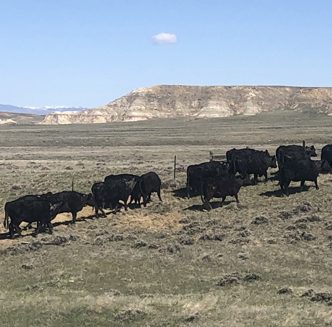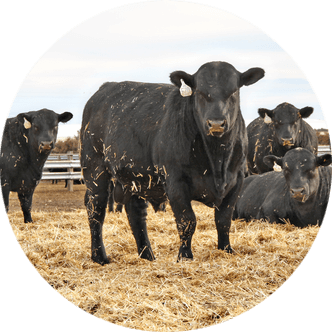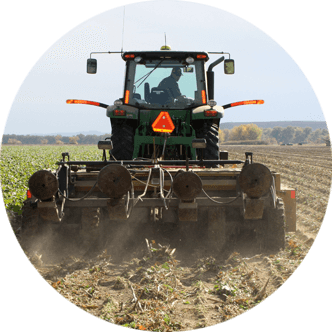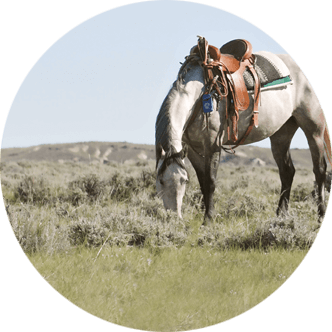State vet provides animal health update for Wyoming producers
Disease traceability, highly pathogenic avian influenza (HPAI), trichomoniasis (trich), brucellosis and New World screwworm (NWS) were the source of long discussions during several committee meetings at the 2025 Wyoming Cattle Industry Convention and Trade Show, hosted by the Wyoming Stock Growers Association in Laramie June 2-4.
During the Livestock Health Committee meeting, Wyoming State Veterinarian Dr. Hallie Hasel provided updates on all of these topics and more, along with their impact on the state of Wyoming.
Animal disease traceability
First, Hasel touched on the U.S. Department of Agriculture’s (USDA) Animal Disease Traceability Rule, which went into effect on Nov. 4, 2024 and requires identification (ID) tags for interstate movement of sexually-intact cattle, yak and bison 18 months of age or older; cattle, yak and bison of any age used for rodeo or recreation or shown for exhibition and all dairy cattle be both visually and electronically readable.
Hasel reminded producers the rule only applies to tags applied after November 2024, and all tags placed before this date are grandfathered in.
She also mentioned there are only two things that changed from the previous 2013 rule – official ID must be both visually and electronically readable and the definition of dairy cattle was revised.
Additionally, she noted official ID tags must carry the “840” prefix, as well as the U.S. shield, and while many veterinarians prefer orange brucellosis tags, Hasel noted tag color is irrelevant.
“Unfortunately, there are counterfeit tags out there already. They can be purchased online for about 50 cents apiece. They do look similar and they will start with ‘840’ but they will not have the U.S. shield or be readable,” she said. “In cases where they have been purchased on accident, we are trying to help producers replace tags at no cost.”
On this note, however, Hasel noted a frequently asked question she runs into often is if the Wyoming Livestock Board has official electronic ID tags for all producers and when they will be getting more.
While she is hopeful there may be some coming by September or October, she reminded producers states are only allocated a certain number of tags by the USDA, and while this number was tentatively set to increase, the government has been working on a continuing resolution for several years.
“We were allocated a set number of tags, but we actually only received half as many,” she said. “We try to get them to livestock markets first, so tags are gone immediately. We hope to have some by October, but we’re not sure yet. At this point, veterinarians and producers in Wyoming are buying their own tags.”
Highly pathogenic avian influenza
HPAI has been top of mind for producers across the U.S. for several years, and Hasel reminded those in attendance of its high death toll.
“Keep in mind, HPAI is transmitted most during times of migration for wild birds and is transmitted primarily through wild waterfowl. Waterfowl can transmit it to dairy bovine, and dairy cows can transmit it back to waterfowl. It also infects people, rodents and cats and causes sudden death in chickens and turkeys. In fact, in just three days, it can take out 95 percent of a flock.”
Hasel noted one dairy in Wyoming tested positive for the disease in the summer of 2024, and monitoring has continued to take place across the state.
“There is still a federal order in place, so interstate movement of a lactating dairy animal requires a negative HPAI test on milk, which also includes any lactating diary animal being taken to a livestock market,” she added.
Today, all three of Wyoming’s licensed dairies are participating in a voluntary milk tank test, which deems Wyoming a monitored, unaffected state and allows cows to cross state lines without receiving individual tests.
Sexually transmitted disease
Hasel went on to share updates on trich and brucellosis.
For trich, she said the state has pretty much seen one case per year for the last few years, often in common grazing areas across Lincoln, Sweetwater and Carbon counties.
As a result of a positive test in Lincoln County this year, 3,200 head were placed under quarantine, and testing was completed with no new cases found.
“Trich testing in the state continues to increase every year throughout the herds, and requirements for our state include testing of any bulls over 24 months of age and all non-virgin bulls,” she said. “If they are going out to common grazing, they have to have a negative test prior to turnout. If they are going to change ownership or go to market, they must have a negative test within two weeks prior to sale.”
She continued, “Brucellosis continues to be an issue because of the Wyoming Designated Surveillance Area, which includes six counties on the far western side of the state. Unfortunately, we have had four herds under quarantine for brucellosis right now, which is the most we have had in many years.”
Hasel noted this uptick in cases likely has to do with changing land use and more urbanization which causes constant elk and cattle exposure since elk are no longer migrating because they have nowhere to go.
“The Wyoming Game and Fish Department has increased hunting numbers and they are working very hard to help us with this issue, but we need to figure out new ways to mitigate our risk. We don’t have all of the answers yet, but we are working on it,” Hasel said.
She also pointed out the importance of vaccination in the state of Wyoming, and because producers have been vaccinating long enough in the U.S., the disease is not necessarily linked to abortion anymore.
“We see positive results in very healthy cows that raise big calves. They’ll be some of the best looking in the bunch,” she admitted. “But they shed bacteria, so we might see weak calves, some joint disease and calves that are unthrifty. And it might cause an abortion in a neighbor’s cow or some other poor reaction in animals that aren’t fully vaccinated.”
With this, Hasel encouraged producers not only to vaccinate for brucellosis, but to administer a booster shot every three years as well.
New World screwworm
Lastly, Hasel brought up the hot button topic of NWS, which has dominated ag news in the past few weeks.
Known for their preference to living flesh, NWS cause severe, painful infections, and left untreated, can kill an animal within a week.
Hasel noted larvae have small tusks which they use to burrow into flesh around any orifice – eyes, nose, mouth, bones, umbilicus, ears and castration wounds – and eventually make their way to the brain or gastrointestinal system.
Hasel mentioned NWS were eradicated from the states once before using the sterile insect technique (SIT), in which sterile male flies are released to breed with female flies so eggs are infertile.
A release center was created at the Darien Gap in Panama, the smallest place between Central and North America with few roads and restricted movement. However, DNA of flies released through SIT weakened and NWS females started mating with fertile males.
“Unfortunately, this all started happening before people were paying attention, and they didn’t respond as quickly as they should have, which is how the NWS fly has progressed back up through Central America,” Hasel said.
Today, the USDA and other partners continue to work with Mexico to prevent the fly from reaching America’s southern border.
Hasel noted there is a plant in Mexico they are evaluating to start producing flies, as well as a place in Texas.
“But, it’s going to be six months to a year before this will actually happen,” Hasel admitted. “To produce these flies, it is first extremely expensive, and keep in mind, these things eat live flesh so the smell from these plants is ungodly and nobody wants it around.”
Hasel further mentioned they have changed the DNA of sterile flies they are producing today to ensure they are more vigorous.
Hannah Bugas is the managing editor of the Wyoming Livestock Roundup. Send comments on this article to roundup@wylr.net.





